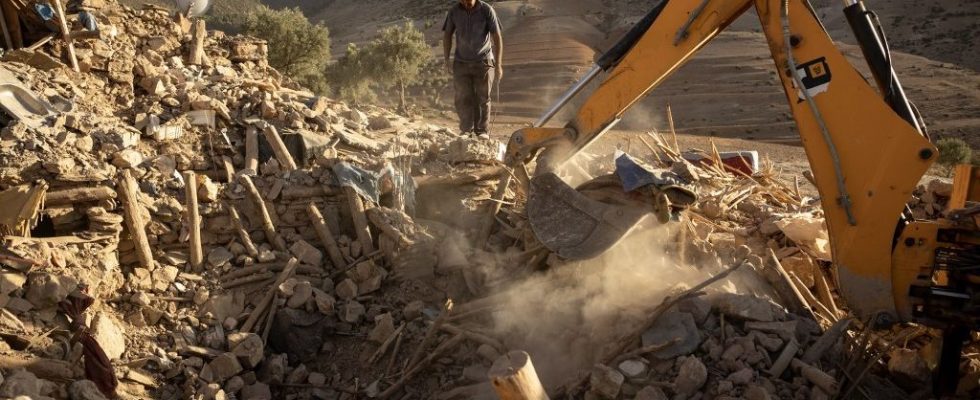There is the drama, the 2,000 lives erased, the rubble left by the very powerful earthquake which struck the region of Marrakech, in Morocco, Friday evening. And then there is the shock wave on minds and social networks, where the most outlandish theories quickly circulated. An earthquake “is a difficult phenomenon to understand when you are not used to it. Often, humans will try to find reasons to explain it and reassure themselves,” explains Lucile Bruhat, expert in seismic risk analysis. And the reason that most often comes up on the Web (especially in the conspiracy sphere) has a name: the Haarp project.
Behind this acronym (High-frequency Active Auroral Research Program) hides a research program led by the University of Alaska on the ionosphere, an upper layer of the atmosphere which plays an essential role in the propagation of electromagnetic waves . “It’s a little-known project, military” in origin and American, an ideal cocktail to “get the imagination working,” explains Lucile Bruhat. A possible role for Haarp had already been mentioned after the earthquakes in Turkey and Syria, “developing countries, so it fuels theories on the activities of American Defense,” continues the expert. On its website, the University of Alaska has also dedicated a whole range of frequently asked questions (FAQ) to answer theories about Haarp.
No link between ionosphere and earthquakes
Haarp is singled out following the publication of videos in which we see flashes of light in the sky of Marrakech, with conspiracy theorists seeing this as manipulation of the ionosphere by the installation located in Alaska. But on the one hand, this kind of phenomenon “often happens after an earthquake, it is linked to electric arcs, to cables which may have broken”, explains Lucile Bruhat and “there is nothing to indicate that an earthquake will occur. produce “. On the other hand, there is no link between the ionosphere and earthquakes. “It’s a rupture of rocks at depth, a sudden break which generates seismic waves, a bit like when you send a pebble into water,” she simplifies.
“We must see the upper part of the Earth as elastic chewing gum,” adds geologist Philippe Vernant, teacher-researcher at the University of Montpellier. On its surface, the plates move, rub against each other, overlap. In the High Atlas, “it deforms by around 1 mm per year”, he explains, “we have been measuring the area with regular GPS points for twenty years” even if it is “not the most active area. “When we accumulate on an area of weakness that already existed before, at some point, we exceed the threshold and it breaks. The real question was not if but when there was going to be an earthquake,” he said. “In the archives, we found traces of an earthquake which occurred in 1755 north of Fes, which must have been of magnitude 6.5 given the size of the fault,” he adds. A major earthquake also hit Agadir in 1960.
“There is no one pushing a button”
Thus, the earthquake in Morocco has “nothing surprising”, even if “we are unable to predict when it will break”, specifies the geologist. And it has nothing to do with human activity, insists Lucile Bruhat. It happens that “small earthquakes, at most magnitude 4 or 5, occur in regions subject to intense mining or oil exploitation. They are the long-term consequence of human activity, but it is not someone pushing a button,” she stresses. And above all, they are incommensurate with the earthquake in Morocco, of magnitude 7. “Between two magnitudes, we multiply the energy released by 30,” specifies the seismic risk expert.
Result of the earthquake: “a displacement of one to two meters, over several tens of kilometers in length and around fifteen kilometers in depth”, details Philippe Vernant, who also undermines any link between the Moroccan earthquake and those which produced in Turkey. “We are much too far away” for the deformation of this winter to have a consequence. “We are in a known seismic region, so this earthquake was not at all improbable”, sweeps Lucile Bruhat. Predictable, but unplannable.

